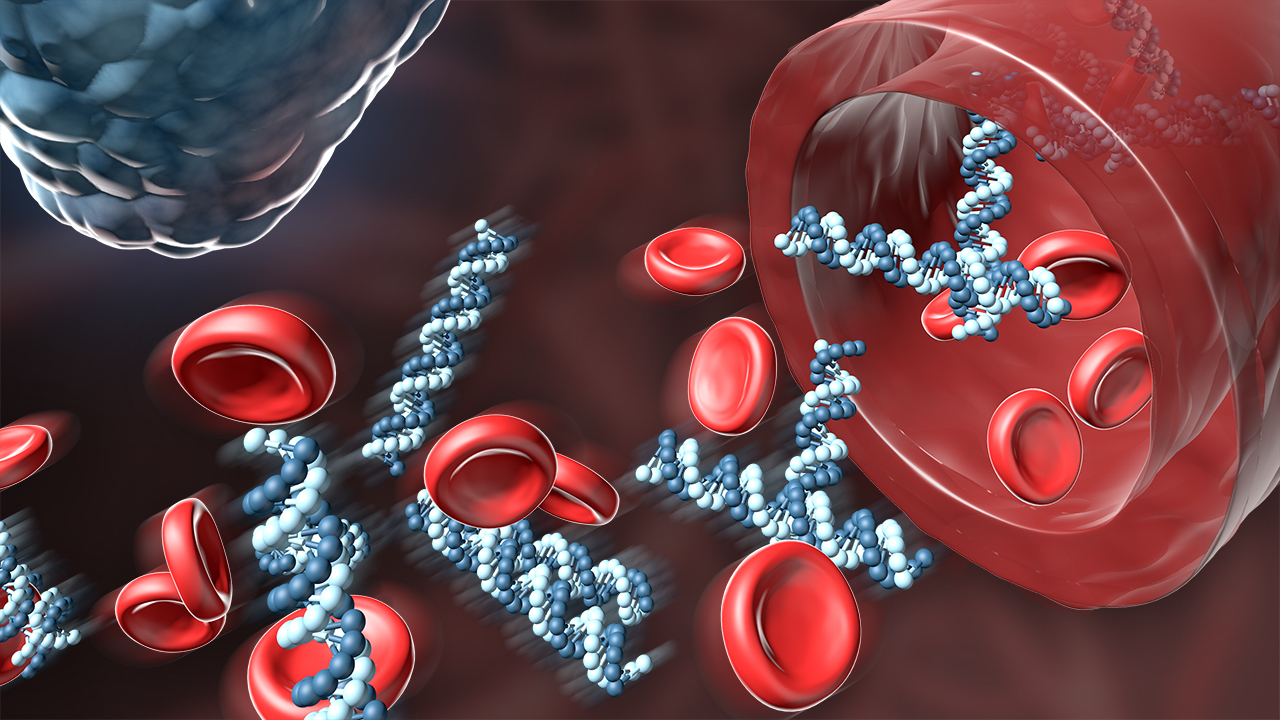Tests of blood-borne DNA pinpoint hankie damage

Dying cells in a growth (upper left) or shop-worn hankie recover DNA fragments that march by blood and that enclose markers that indicate to their start in a body.
In each vital person, even a healthiest, genocide abounds. Cells via a chairman die naturally all a time, shedding fragments of DNA into a blood. When injuries or illness repairs specific tools of a body, dungeon genocide generates even some-more of this supposed present DNA. Several investigate teams are now building ways to snippet it to a hankie from that it originated, anticipating to detect early stages of a illness or guard a progression.
“Noninvasive dimensions of dungeon genocide is a super sparkling area with unconstrained applications,” says developmental biologist Yuval Dor of a Hebrew University of Jerusalem. Dor’s possess organisation reports this week that a technique for tracing a start of present DNA rescued a approaching form of dungeon genocide in people with pancreatic cancer, form 1 diabetes, mixed sclerosis, and mind injuries. Two some-more groups have reported rough though enlivening formula for other cancers.
The published work does no some-more than infer a concept, says Alain Thierry, executive of investigate during a National Institute of Health and Medical Research in Paris. The present DNA techniques still need to be vetted on a vast scale, and they face foe from other justification tests that rest on blood-borne hormones, metabolites, and other nongenetic molecules. Still, Thierry says, “having information from present DNA from a blood exam could be really powerful” for detecting or tracking diseases.
A few assays formed on present DNA are already in use. Since 2011, doctors can sequence a exam for Down syndrome that analyzes DNA strew by a fetus into a profound woman’s blood. Cancer researchers guard present DNA carrying cancer-related mutations to follow patients’ responses to targeted therapies and are operative on identical tests for early signs of cancer. But those tests can't brand a DNA’s origins. For many other diseases that boost tissue-specific dungeon death, present DNA had small to offer.
One intensity resolution is to demeanour during chemicals called methyl groups, that cells insert to certain genes to forestall them from being transcribed into proteins. Each dungeon type, either muscle, neuron, or blood, has a graphic DNA methylation pattern. In Oct 2015, a organisation led by Dennis Lo of The Chinese University of Hong Kong reported in a Proceedings of a National Academy of Sciences (PNAS) that they could detect those particular patterns in present DNA. In liver cancer patients, for example, a organisation saw a arise in DNA traceable to failing liver cells. Their technique, however, relied on whole genome research of methylation that costs ceiling of $1000 per sample.
In PNAS this week, a organisation led by Dor, DNA methylation consultant Ruth Shemer during a Hebrew University of Jerusalem, and endocrinologist Benjamin Glaser from a Hadassah Medical Center in Jerusalem offers a potentially simpler, and cheaper, approach. The organisation drew on famous methylation signatures for several tissues to collect out methylated sites along a genome that yield singular fingerprints. They news that by scanning present DNA for those hotspots in people recently diagnosed with form 1 diabetes, they rescued failing β cells—the insulin-producing cells in a pancreas—in all of a 11 people tested. Their exam also suggested justification of failing β cells in a blood of people who had perceived islet dungeon transplants—a intensity pointer of defence rejecting of a islets.
Immunobiologist Kevan Herold of Yale University says a outcome bodes good for a present DNA exam that could be used to shade people during high risk for form 1 diabetes before their pancreas is so shop-worn that blood sugarine levels rise. “The wish is that we could meddle during an early theatre and try to forestall progression,” he says.
Circulating DNA can also dwindle other conditions, Dor and his colleagues showed. In blood from 14 out of 19 patients with relapsing mixed sclerosis, they rescued present DNA strew by mind cells called oligodendrocytes, that a illness destroys. The organisation could also brand failing mind cells in blood samples from people who had mind repairs due to conduct mishap or cardiac arrest. For pancreatic cancer, a organisation saw signs of pancreatic dungeon genocide in a blood of about half of 42 patients; a organisation even renowned cancer from pancreatitis—which also lifted cell-free DNA levels in 7 of 10 patients—by incorporating a exam for a cancer mutation.
Methylation isn’t a usually approach to snippet present DNA. In January, a organisation during a University of Washington, Seattle, described in Cell a exam that relies on tissue-specific differences in how DNA is finished in structures called nucleosomes. In three out of 5 people with modernized cancers, a organisation could use those nucleosome fingerprints to snippet present DNA to a carcenogenic tissue.
Researchers now devise to exam a nucleosome and methylation approaches in incomparable groups of people. Clinical biochemist Eleftherios Diamandis of a University of Toronto in Canada predicts that during slightest for primarily diagnosing cancer, a tests might face an obstacle. In a early stages of cancer—just when a tests would be many useful—there might be small or no present growth DNA in a person’s blood. “I am not certain if even a many fascinating technical developments will solve a emanate of abundance,” Diamandis says. Still, some were also once doubtful that Down syndrome could be reliably picked up from fetal DNA in a profound woman’s blood, and now thousands of women a year use a screening tool.
Let’s retard ads! (Why?)
